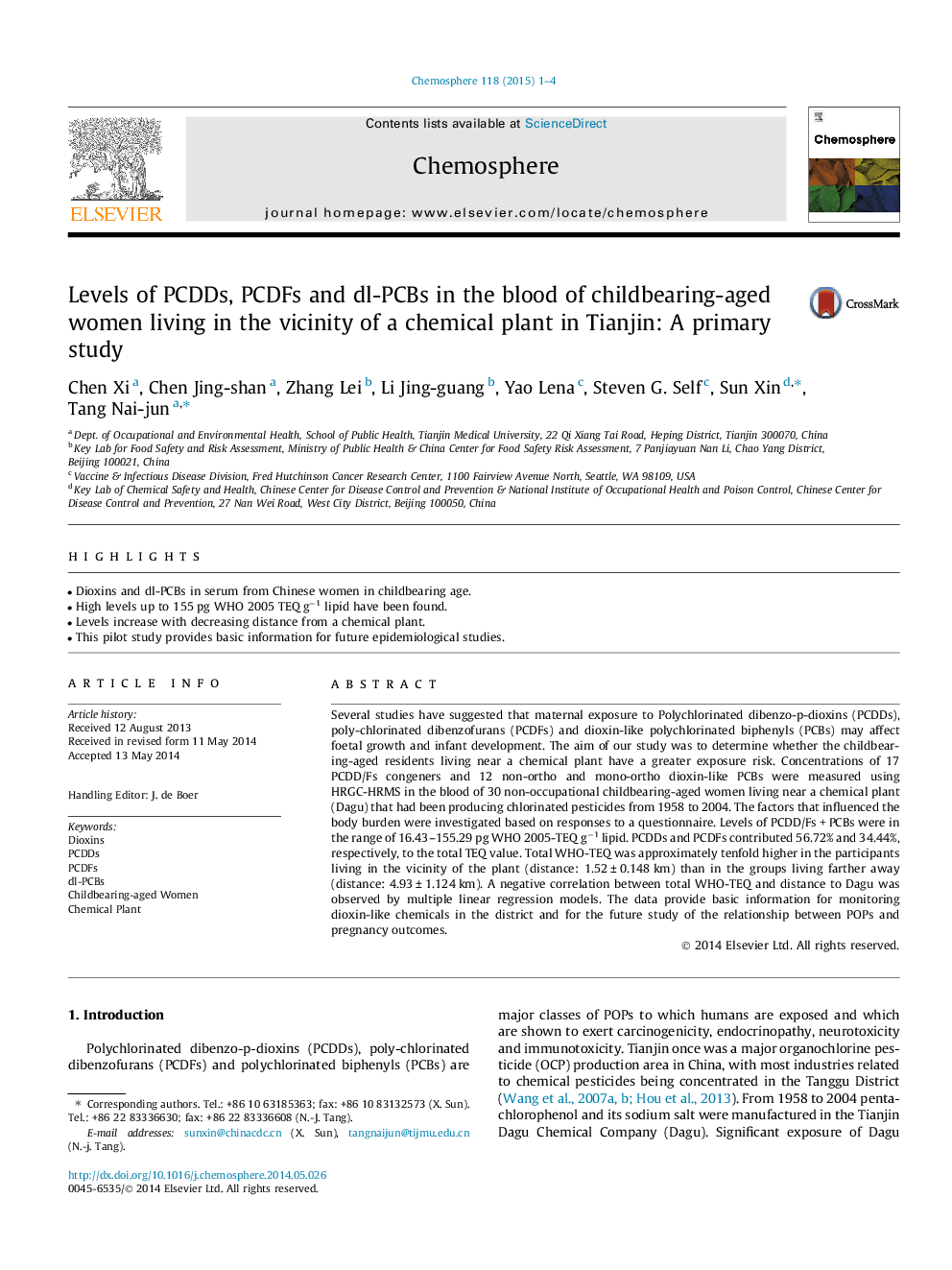| Article ID | Journal | Published Year | Pages | File Type |
|---|---|---|---|---|
| 6308394 | Chemosphere | 2015 | 4 Pages |
Abstract
Several studies have suggested that maternal exposure to Polychlorinated dibenzo-p-dioxins (PCDDs), poly-chlorinated dibenzofurans (PCDFs) and dioxin-like polychlorinated biphenyls (PCBs) may affect foetal growth and infant development. The aim of our study was to determine whether the childbearing-aged residents living near a chemical plant have a greater exposure risk. Concentrations of 17 PCDD/Fs congeners and 12 non-ortho and mono-ortho dioxin-like PCBs were measured using HRGC-HRMS in the blood of 30 non-occupational childbearing-aged women living near a chemical plant (Dagu) that had been producing chlorinated pesticides from 1958 to 2004. The factors that influenced the body burden were investigated based on responses to a questionnaire. Levels of PCDD/Fs + PCBs were in the range of 16.43-155.29 pg WHO 2005-TEQ gâ1 lipid. PCDDs and PCDFs contributed 56.72% and 34.44%, respectively, to the total TEQ value. Total WHO-TEQ was approximately tenfold higher in the participants living in the vicinity of the plant (distance: 1.52 ± 0.148 km) than in the groups living farther away (distance: 4.93 ± 1.124 km). A negative correlation between total WHO-TEQ and distance to Dagu was observed by multiple linear regression models. The data provide basic information for monitoring dioxin-like chemicals in the district and for the future study of the relationship between POPs and pregnancy outcomes.
Related Topics
Life Sciences
Environmental Science
Environmental Chemistry
Authors
Chen Xi, Chen Jing-shan, Zhang Lei, Li Jing-guang, Yao Lena, Steven G. Self, Sun Xin, Tang Nai-jun,
